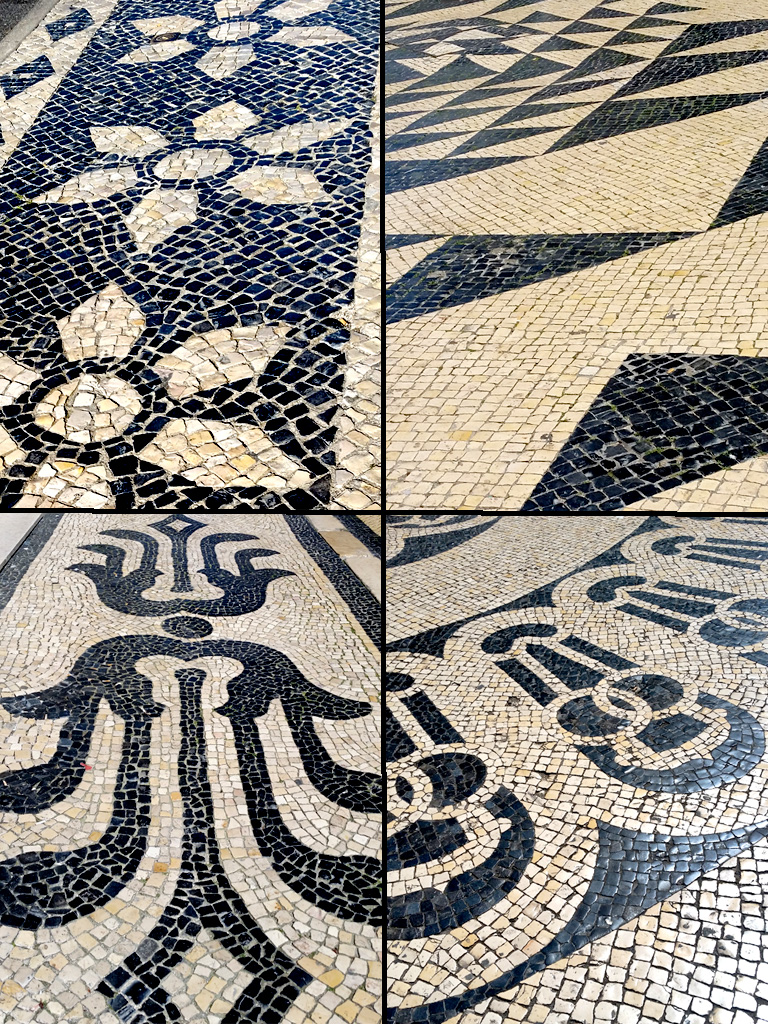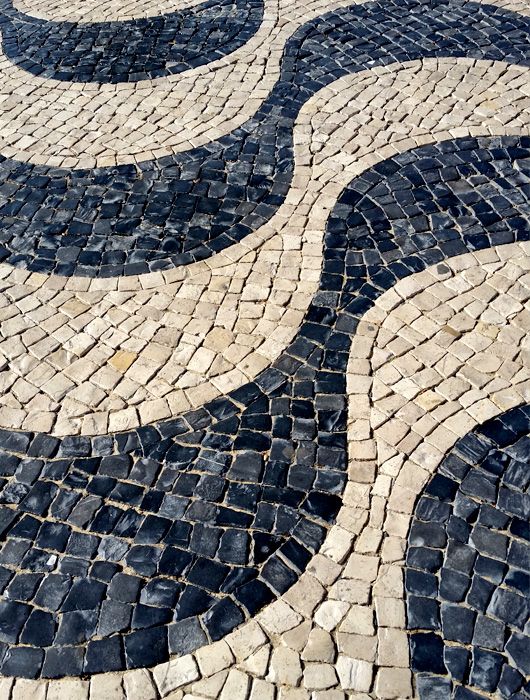Here are few examples of the lovely traditional Portuguese pavement cobblestone we’ve seen around Lisbon.

Most are in good shape and a pleasure to walk upon. Occasionally we’ve encountered rough patches worn away by construction, damage or age.
We stayed in Mouraria, which is the oldest district in Lisbon and was once the less sunny Moorish quarter where the Muslims were confined. Here the paved streets can be extremely steep and the cobblestone old and worn very smooth. Gary and I found it hard to imagine what it would be like to walk up and down the hills in the rain. As it was, we found ourselves slipping up occasionally.
“Traditional Portuguese pavement (cobblestone) is a historical heritage of the Roman culture and construction technology, which was imposed in Portugal in the fourteenth century during the reign of D. João II. The Portuguese cobblestone has we know it today, was originated in 1842 at S.Jorge Castle in Lisbon by the vision of its governor, Lieutenant General Candido Pinheiro Eusebio Furtado. The castle and the surroundings were transformed in a carpet of white limestone pebbles, with a zigzag pattern in black basalt stone, where there were introduced flowers, trees and mosaic pavement.” ~Roc2c.
